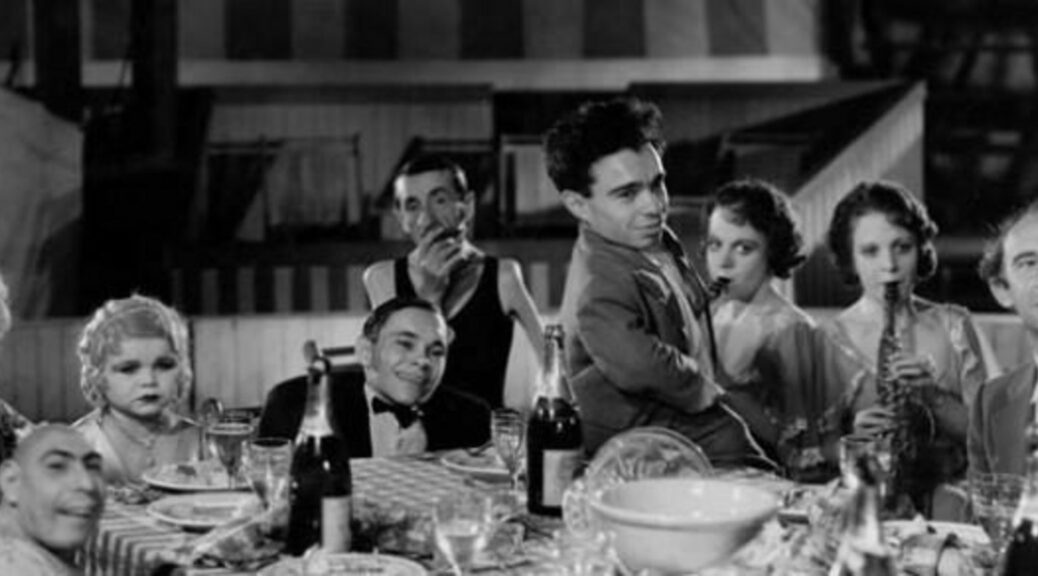The dinner scene is a staple in all of film. It’s a way to get to know the family, tweak tensions, display power struggles, uncover secrets, get sentimental, get gross.
And horror filmmakers have mined the anxiety of the dinner table brilliantly for decades. Hereditary‘s “I am your mother!” to The Invitation‘s big reveal, Invisible Man‘s public, damning murder to Beetlejuice‘s singing possession to every amazing scene in The Menu. There are dozens of worthy scenes and films to discuss, but since we must limit ourselves, here are our five favorite dinner scenes in horror.
5. Freaks (1932)
It’s the turning point in Tod Browning’s controversial film. It’s the moment when all the circus freaks embrace Cleopatra, accept her as family.
Gooble gobble gooble gobble, one of us! One of us! The proud call of the outcast, a phrase adopted and beloved but horror fans and weirdos the world over. Could Browning have known when he filmed this boisterous celebration that he’d instantly created a classic?
4. Dead Alive (Braindead) (1992)
Nasty!
Peter Jackson knows gross out splatter gore. If he didn’t prove that with his first films, he owns it with Dead Alive. Power tools and priests, zombie babies and Sumatran Rat Monkeys, and one delicious custard.
That custard bit wins. The dinner scene in this film – a movie spilling over with viscera – is among the most disgusting things ever set to film.
Bravo, Peter Jackson!
3. Rocky Horror Picture Show (1975)
Master! Dinner is prepared!
Poor Dr. Frank-N-Furter (Tim Curry, perfection). These party crashers have ruined his big event AND Rocky’s birthday party! And now that repugnant old scientist is here looking for Eddie – a rather tender subject.
An exceptional cast, a clever dance of allegiances, a showy reveal and my favorite “Happy Birthday” meme all roll into one delicious dish!
2. Eraserhead (1977)
Henry (Jack Nance) is so uncomfortable in this scene, and it’s the first scene where the audience really associates with him. He’s a hard character to get behind until he goes to his girlfriend Mary’s parents’ house for dinner.
Her dad tells this weird story and asks him to do the honors of cutting the meat. He’s nervous, wants to vanish, is afraid to say no but has no idea what to do.
Which is probably everybody’s fear in such a situation. Although, this being a David Lynch film, none of us will ever have exactly this experience. Man, Mom seems to be really invested.
1. The Texas Chain Saw Massacre (1974)
It is around the dinner table that a guest gets to see the true family dynamics. Sally’s getting a good look. Like a really close up, veiny eyed look.
This is the scene that grounds Tobe Hooper’s 1974 masterpiece. Suddenly it’s a family with a lived-in vibe and a backstory. And another person’s face. And a metal basin and a nearly mummified old man.
Edwin Neal’s already had his chance to nab the spotlight in the van, and of course Gunnar Hansen’s the star of the show. It’s in this scene that Jim Siedow gets to dig in and create an unforgettable character. And Sally (Marilyn Burns – god bless her) – goes through a lot and comes out the other side.

